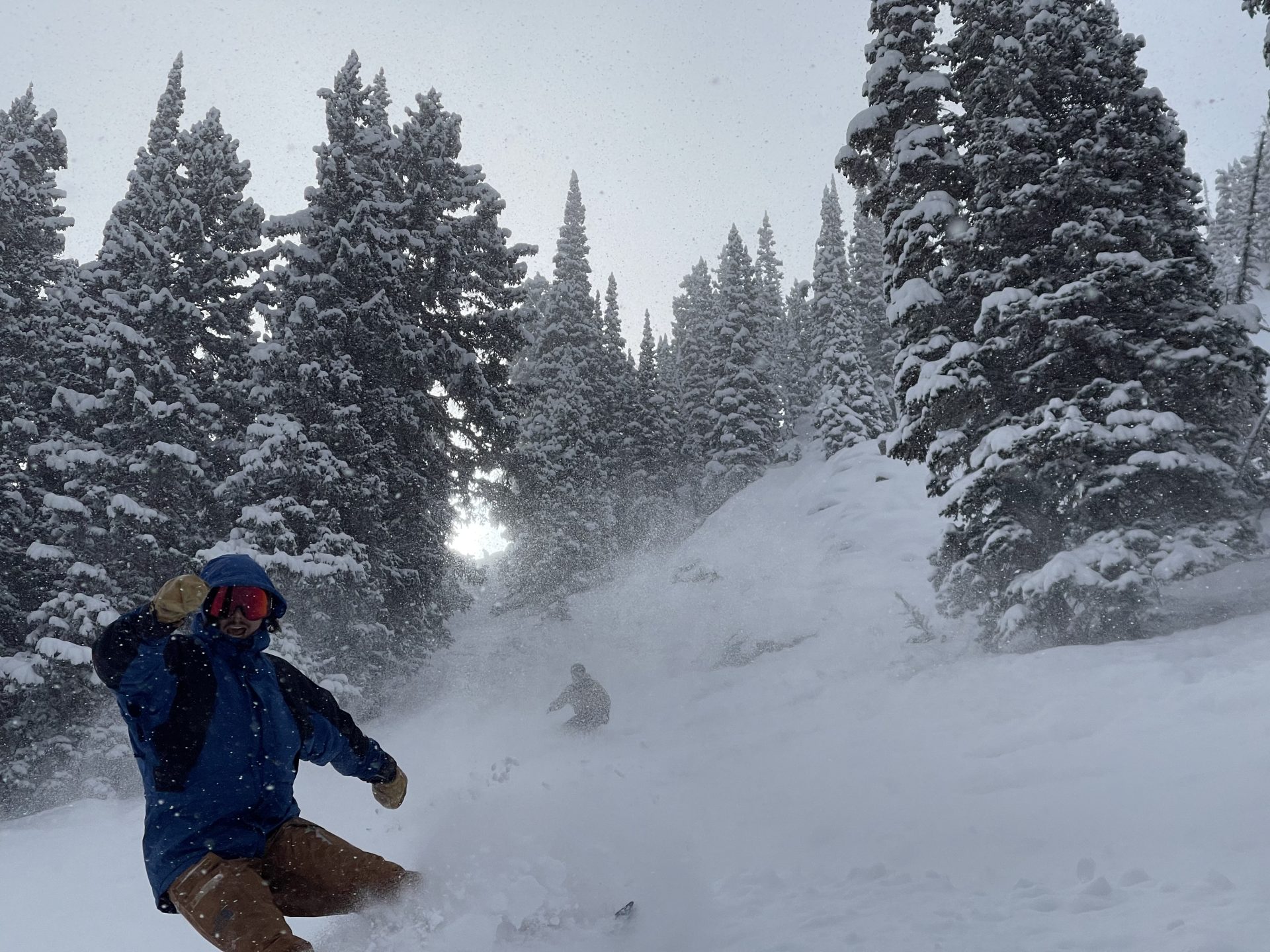
I stand alone in the treed area of a north-facing slope under a South Lake Tahoe peak. It’s only about 30 degrees in steepness, but snow is falling and I can feel my blood pressure rising. Maybe I was thinking about the persistent weak layer present in the snowpack. Maybe my dad’s voice—he likes to tell me how stupid I am for going alone— was ringing too loudly in my head that morning. Either way, I decided it was time to rip off the skins and head back to the car.
The following weekend, I spent an hour explaining my backcountry process to my parents, hoping it would ease their worries about my habit of solo touring. They ask me why I don’t just go to the resort on days when I can’t link up with a friend. I think, “Am I really supposed to subject myself to the weekend crowds just because I can’t find a partner?” My dad then reads me a brief story about a snowmobiler in Colorado who narrowly escaped an avalanche. I admit the snowmobiler is lucky and don’t elaborate too much on how dangerous this February has been for the North American backcountry ski community.
There have been eight confirmed avalanche fatalities in the United States in February alone. A snowmobiler and one backcountry skier have been killed in Utah. While touring in the backcountry near Oregon’s Mt. Bachelor, a couple were buried together. In Colorado, a skier and snowboarder were killed in separate avalanches. A Mammoth Mountain patroller died while doing mitigation work, and a Tahoe skier was killed at the popular Powderhouse Peak.
In addition to these confirmed deaths, a Colorado snowboarder remains missing, an experienced Seattle skier died after ducking a rope while vacationing in Japan, and Utah and Colorado avalanche centers have both reported extremely close calls with multiple snowmobiles in large avalanches.
Of course, we all seek powder, but also solitude and freedom. I’m much more nervous when no one else is at the trailhead, and there is no skin track. Excitement and a little bit of fear will nibble at me as I slip into my boots. Inversely, it’s easy to be comfortable when there are 10 cars crammed into a small turnout, and you’re asking yourself, “Is this really better than the resort?” On those days, it still doesn’t take long before you are in the woods and at the mercy of Mother Nature.
In light of the recent deaths, I’ve been wondering, “What drives us to make poor decisions?” I don’t think we skiers are a naive bunch. We come to terms with the risks. Everyone has their own tolerance levels and does their best to stick to them. Nobody wants to get hurt, but sometimes shit happens. The mountains can be cruel, and they deserve our respect. Incidents will occur.
To an extent though, we are at the mercy of ourselves. Often, avalanches cause a decision-making issue. There weren’t just four tracks in the steep Powderhouse zone on February 17, 2025, because those were the only people there with the skill for it. The three people who skied it first got lucky. All four of them were irresponsible. The Sierra Avalanche Center emphasized exactly that terrain’s elevated and unpredictable danger in its report that morning.
During this time that has proven perilous for American backcountry recreationists, many have made safe plans, stayed vigilant to conditions and terrain, and stuck to low-risk areas while maximizing fun. If you’re like me, you think it’s worth taking the time, every time, to make good choices in the backcountry and come home safely to your friends and family. Yes, I know going solo is not smart. But just like I explained to my parents, I use mapping tools to scout out my route and incorporate wide safety margins. I scour the internet for beta and try to understand my avalanche center’s reports for the prior week. This is my process for venturing into a new area. Some would consider it overkill.
I implore you to practice overkill in the backcountry. Like me, you might find it calming, but it could also save your life. See you out there!
Dustin Decker
About the Author
Dustin Decker is a California native, who after graduating from Purdue, moved to Salt Lake City and began obsessing about skiing. He then quit his job and spent two years ski bumming as a tram mechanic in North Tahoe. He now works as an engineer who travels to job sites in remote areas of Northern California, often slipping away for some turns. You can find him skiing the West Coast from Mt. Bachelor down to the Eastern Sierra. Occasionally, he ventures out to Utah or Colorado to visit old friends. He is a do-it-all outdoorsman who takes a sick pleasure in the art of the ‘sufferfest.’
Note: This article is not meant to place blame on any individual for their actions or decisions. Rather, it encourages recreationists to fully assess the situation and consider what skiing powder is worth to them. Those individuals lost to the mountains should be remembered with love. Please consider donating to your local avalanche center, backcountry alliance, and/or patrol organizations.
